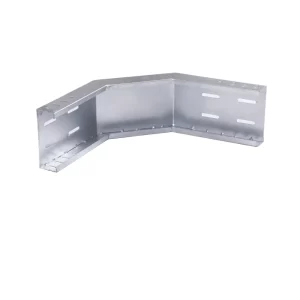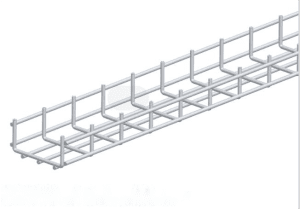Cable trays come in a variety of sizes to accommodate different cable capacities, installation environments, and load-bearing requirements. There isn’t a single universal “standard” size, but rather a range of standard dimensions defined by various standards and regulations, with the most common ones adhering to international or national standards such as those set by the National Electrical Code (NEC) in the United States or International Electrotechnical Commission (IEC) standards globally.

Standard Widths
Cable tray widths typically range from 100mm (3.94 inches) to over 1000mm (39.37 inches), with common increments in between such as 150mm, 200mm, 300mm, 400mm, 600mm, and 800mm. The width chosen depends on the number and size of cables to be installed, as well as the voltage rating and spacing requirements for the cables to avoid overheating and to facilitate maintenance.
Standard Depths
Depth is another critical dimension, affecting both the capacity to hold cables and the tray’s structural integrity. Common depths range from 50mm (1.97 inches) to over 300mm (11.81 inches), with increments in steps like 75mm, 100mm, 150mm, and 200mm. Deeper trays are used for larger diameter cables or to accommodate a higher volume of cables.
Height or Side Rail Heights
While not typically referred to as a “size,” the height of the side rails is important for cable retention and protection. This measurement can vary but usually ranges from 50mm to 75mm for typical applications.
Types of Cable Trays and Their Sizes
Ladder Type: Ladder trays consist of two longitudinal side rails connected by rungs. They are available in a wide range of widths and depths as mentioned above.
Solid Bottom (Trough or Channel): Solid bottom trays provide a covered surface for cables and are available in similar width and depth options as ladder types, with depths typically starting at 50mm and increasing in increments.
Wire Mesh: Wire mesh trays are more open, promoting air circulation. They also follow a similar sizing pattern but with wire mesh instead of solid sides or rungs.
Single Rail or Cable Basket: These types are more specialized and are characterized by a single rail or basket-like structure. Their dimensions vary greatly based on design, but they are typically chosen for specific cable management needs in limited spaces.

Choosing the Right Size
Selecting the correct cable tray size requires careful consideration of several factors:
Cable Diameter and Quantity: Measure the diameter of the largest cable and calculate the total cross-sectional area of all cables to be placed in the tray.
Spacing Requirements:Follow industry standards and local codes for minimum clearances between cables and around tray edges to prevent overheating and facilitate cable addition or removal.
Load Capacity: Ensure the tray can bear the combined weight of the cables plus any additional loads (snow, ice, etc.) based on the installation environment.
Installation Space: Consider the available space for installation, including vertical and horizontal clearances, as well as any obstructions.
It’s always advisable to consult the manufacturer’s recommendations, applicable standards, and engage a professional to assess your specific cable management needs to determine the most appropriate cable tray size for your project.

